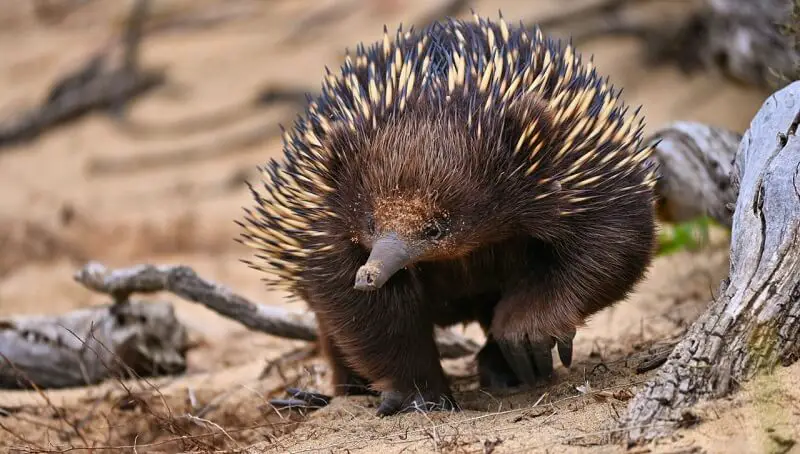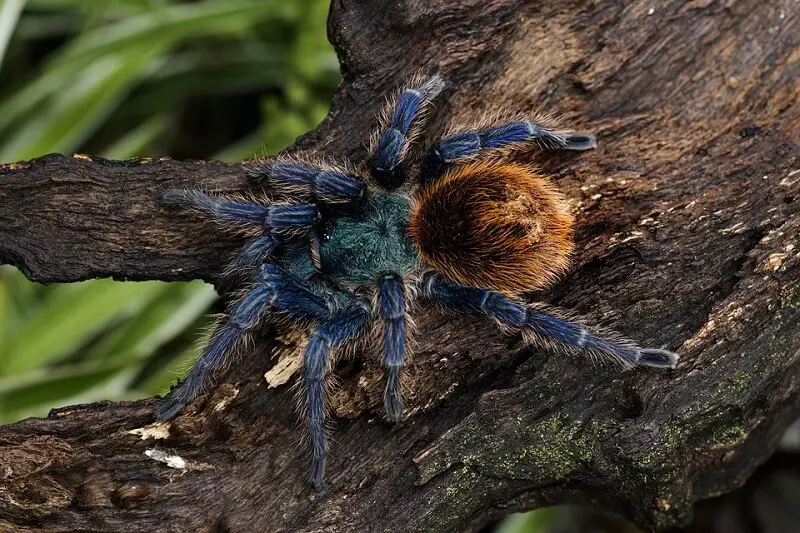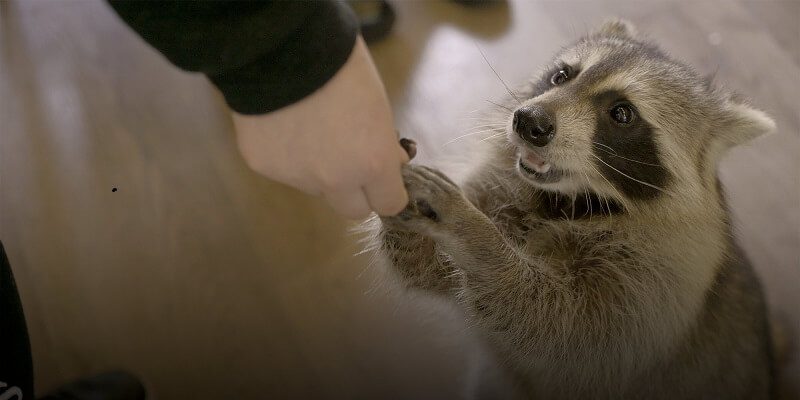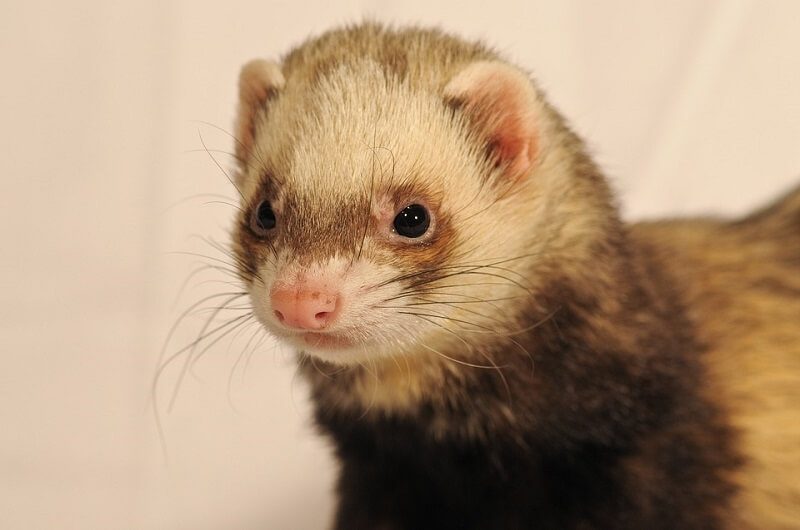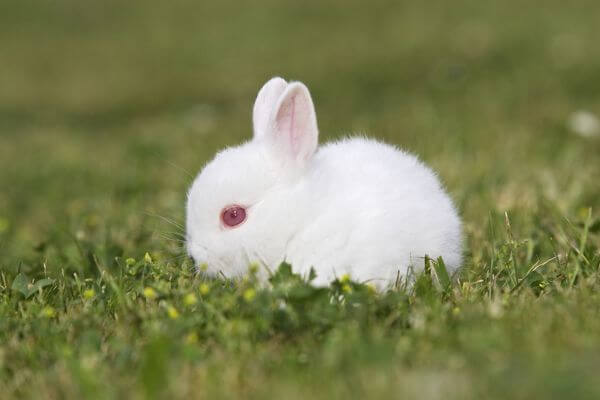The echidna is also known as the thorny anthill. It is part of the Tachyglossidae family, the genus Tachyglossus and can only be found in Australia and New Guinea. It is believed that the echidnas date back 20-50 million years and have adapted quite well to life on the ground, as their ancestors were aquatic. The echidna is different from other animals, having spikes on the back that protect it and strong claws with which it digs its dens.
The name Echidna originated in Greek and refers to a mythological being half reptile and half mammal with a female face and a snake body. Echidna is part of the order of monotremes. They are different from other mammals and resemble reptiles in the sense that instead of giving birth to live offspring, they lay eggs that hatch outside the mother’s body. The monotremes are also unique because they have a single orifice, the cloaca, used for both excretion and reproduction. Only five species of monotreme are known, four of them being the echidna, and the fifth is the platypus. The order of Monotremes contains the most different species from what we know as mammals.
Monotremes are so different from the rest of mammals that some authorities place them in a subclass with extinct ascenders so that they are categorized separately from mammals. Other specialists consider the monotremes reptiles. Of the four species of echidna, the short-beak echidna is the only species in its genus and contains three subspecies: Tachyglossus aculeatus multi aculeatus, Tachyglossus aculeatus aculeatus and Tachyglossus aculeatus setosus. The latter is the territorial restricted to Tasmania and is often considered a distinct species.
Description
You might also like my articles about:
The echidna has a length between 35 and 50cm long and weighs 4-7 kg, depending on the species. Males are usually larger than females. It can reach a speed of approximately 30 km/h.
The echidnas have their bodies covered by a brown or black coat, and from place to place, they have hollow spikes inside. The body is muscular and rounded. The tail is thick and hair-free. The elongated muzzle is provided with a long, sticky tongue. The vision of the echidnae is poorly developed, but it compensates with the smell. Their strong legs and claws are specially adapted for digging.
Females lay eggs that will hatch outside the body. In this respect, the echidnas resemble reptiles. They also have other features found in reptiles. Similarities are also found in certain bone structures, as well as in the digestive, excretory, and reproductive systems. Like reptiles, ducts of the excretory and reproductive systems open in a common cavity called the cloaca.
Echidnae are homeothermic animals, meaning they keep their body temperature constant like the rest of the mammals and that they feed their offspring with milk. The Tasmanian subspecies is characterized by a shorter length of spikes.
Behavioral features
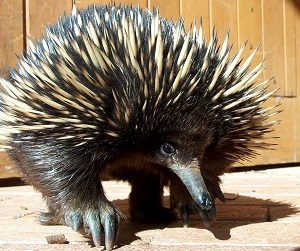 Short-beak echidnas tend to be nocturnal animals, or more active at night, as they go out in the evening to feed. They move slowly and carefully. The main food of the echidnae is composed of ants and termites which they gather with their long tongue, lined with sticky mucus.
Short-beak echidnas tend to be nocturnal animals, or more active at night, as they go out in the evening to feed. They move slowly and carefully. The main food of the echidnae is composed of ants and termites which they gather with their long tongue, lined with sticky mucus.
Echidnas are specialized diggers and nest in empty tree trunks, burrows, or holes under trees or stones. They can lift their spikes and withdraw their limbs to protect themselves just as hedgehogs do.
They are solitary animals and show reduced interactive behavior. Only in the mating season, a few males will follow a female, and the dating does not last long.
Studies in the snow-capped mountains of Australia have shown that the echidnas hibernate during the cold season, from April to July, and the body temperature can drop to 4 degrees Celsius. Echidnas can also enter a state of latency, slowing down their vital functions, and outside the hibernation period if food resources are limited.
Reproductory maturity is reached at about two years. On average, females produce offspring about once every two years. A single egg is placed directly from the orifice in a temporary sachet where it will be incubated. Here, the offspring hatches and grows. In the wild, the echidna lives about 20 years.
Habitat and distribution
Short-beak Echidnas are found in different habitats such as forests, meadows, rocky areas, or sandy plains in the Australian desert. They have been found even in mountains in areas that occasionally can be covered by snow. In general, it does not tolerate extreme temperatures. It lives in small, rocky caves to protect itself from bad weather. It prefers hill areas with forests to hide around stones and vegetation from predators.
The Echidnae live in most of Australia and on many islands around it such as Tasmania and New Guinea.
Threats
The short-beaked echidna seems to have resisted most threats and has easily adapted to newly introduced species from Europe. Protective spikes and defensive strategies help them survive non-native species even if they have had a negative impact on other native species. Not being restricted to a single type of habitat and the abundance of food makes them invulnerable enough in front of predators.
